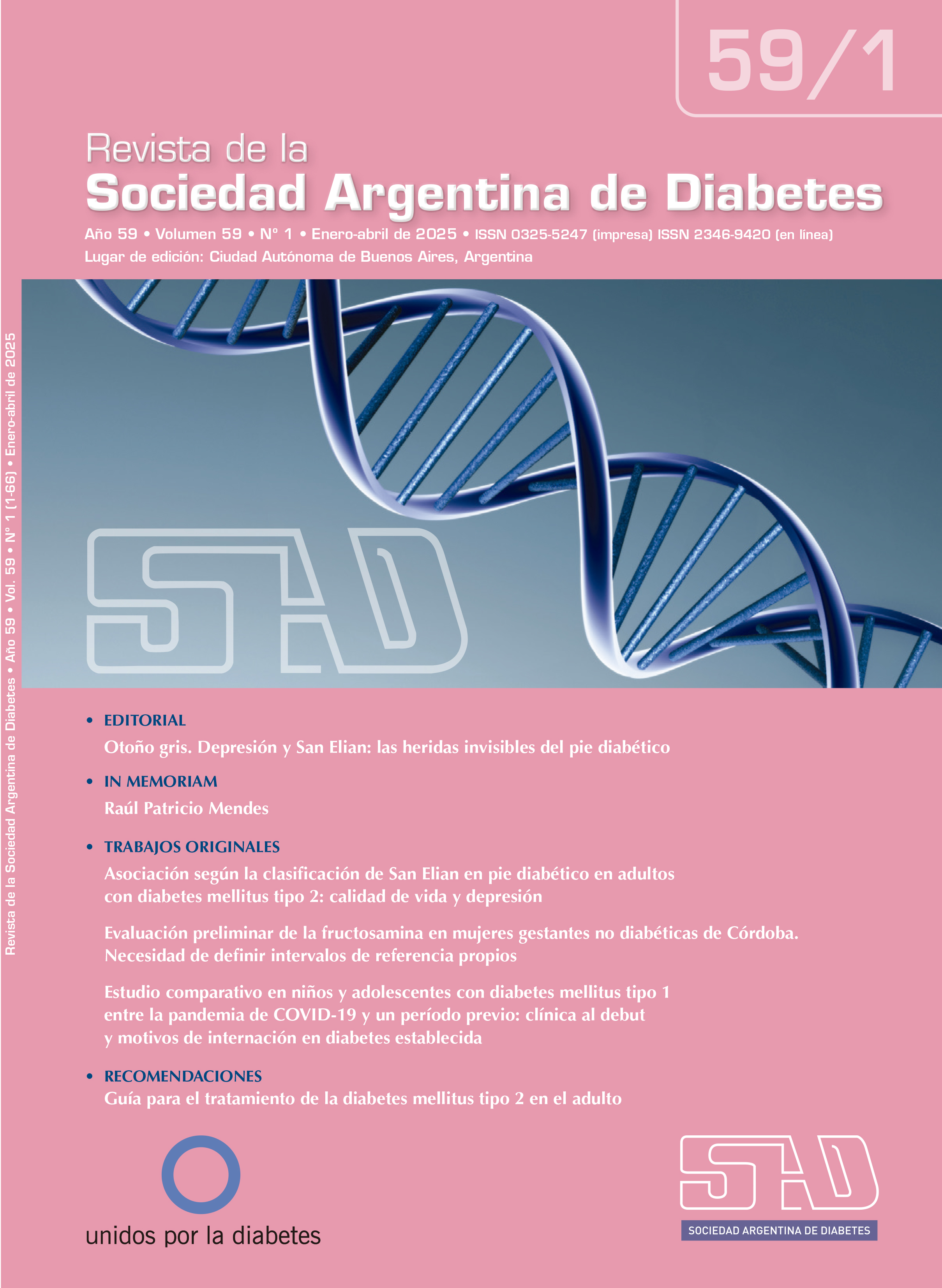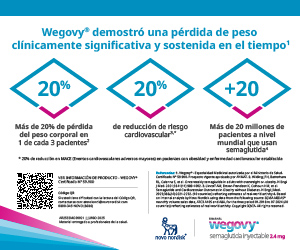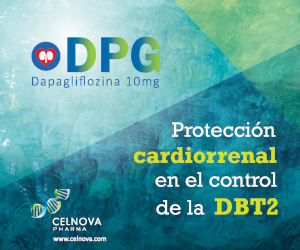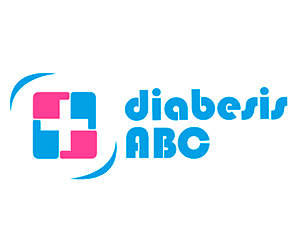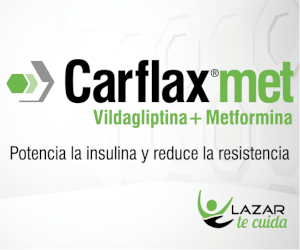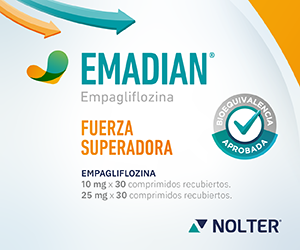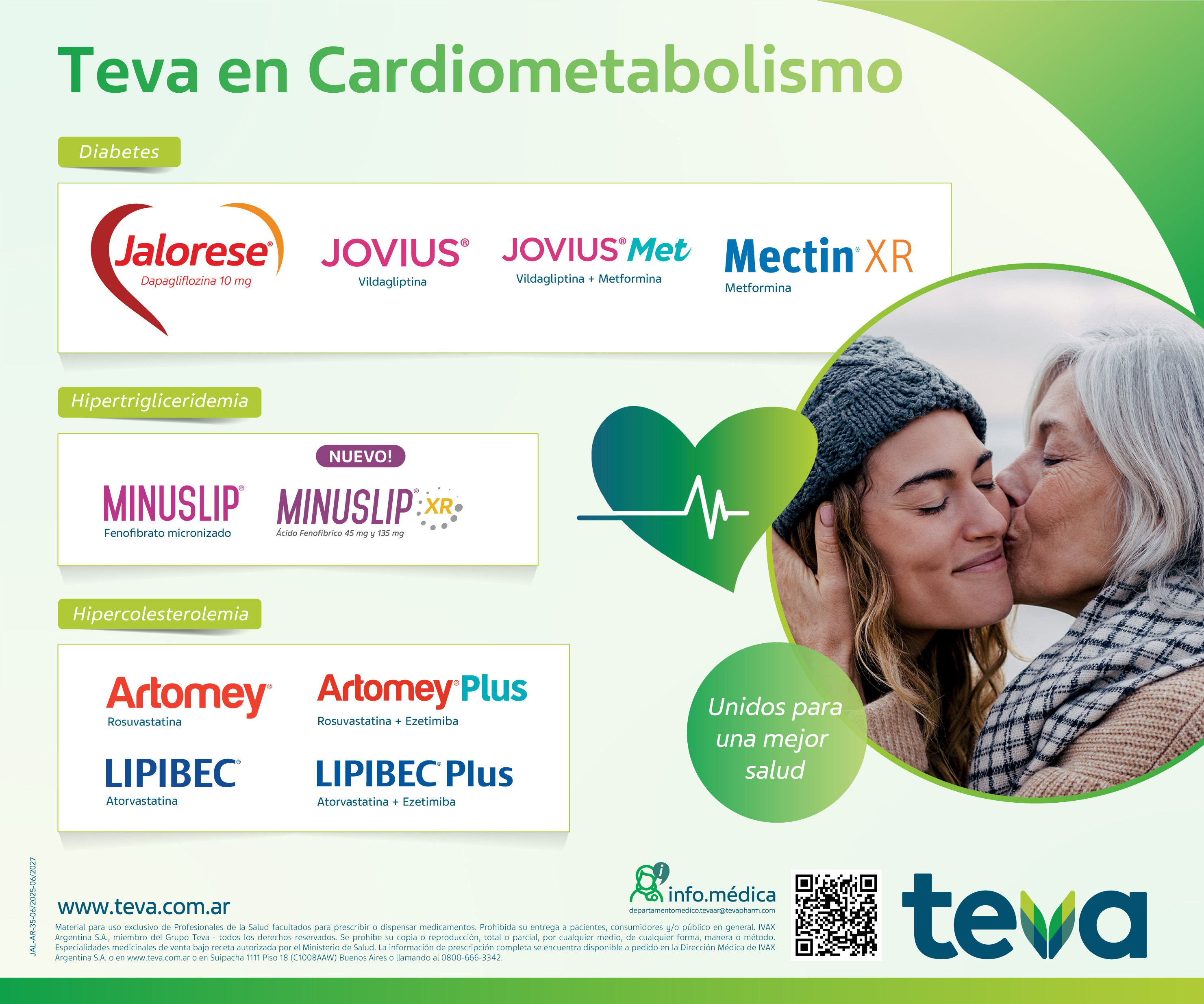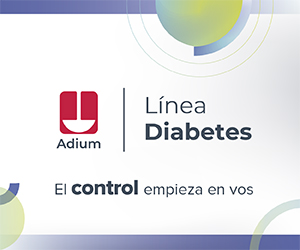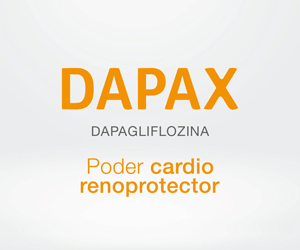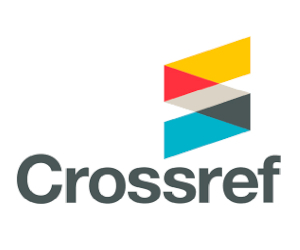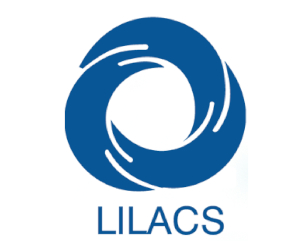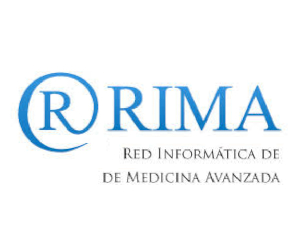Guía para el tratamiento de la diabetes mellitus tipo 2 en el adulto
DOI:
https://doi.org/10.47196/diab.v59i1.1167Palabras clave:
guía, tratamiento, diabetes mellitus tipo 2, adultoResumen
Introducción: la diabetes mellitus (DM) es una de las condiciones crónicas más prevalentes en el mundo que afecta a 537 millones de personas; el 90% de los casos corresponde a diabetes mellitus tipo 2 (DM2), lo que representa un significativo desafío para los sistemas de salud.
Objetivos: a) actualizar la Guía de Tratamiento de la Diabetes Mellitus tipo 2 de la Sociedad Argentina de Diabetes (SAD) publicada en 2016; 2) proporcionar al equipo de salud una herramienta actualizada para optimizar el manejo terapéutico de las personas que viven con esta enfermedad, basada en la evidencia más reciente.
Materiales y métodos: se convocó a un grupo de expertos, miembros titulares de la SAD, para revisar la evidencia disponible y realizar una actualización de las recomendaciones para el tratamiento de la DM2. Se designó un responsable de redacción para la compilación final del documento.
Resultados: el manejo integral de la DM2 debe abordar no solo la alimentación y la actividad física, sino también aspectos claves del estilo de vida saludable como la cesación tabáquica, la abstención del consumo de alcohol, la higiene del sueño y la atención de la salud mental. Estos componentes constituyen la base de la terapéutica y deben considerarse en todas las etapas del tratamiento. La metformina sigue siendo un fármaco de primera línea, siempre que no existan contraindicaciones o intolerancia. En la selección del tratamiento farmacológico, es fundamental considerar la presencia de comorbilidades, especialmente la enfermedad cardiovascular. La presencia de enfermedad cardiovascular ateroesclerótica o de factores de alto riesgo cardiovascular debe orientar a la priorización temprana de agentes como los agonistas del receptor de GLP-1, los cuales demostraron reducir los eventos cardiovasculares. En personas con insuficiencia cardíaca o enfermedad renal crónica, los inhibidores de SGLT-2 se recomiendan porque su eficacia y seguridad en estos contextos están ampliamente respaldadas por la evidencia. Por otro lado, la presencia de obesidad debe orientar la elección de fármacos que no solo controlen la glucosa, sino que también favorezcan la pérdida de peso. Los agonistas del receptor de GLP-1 y los inhibidores de SGLT-2 tienen efectos beneficiosos en este aspecto. Es importante destacar que todas las clases de fármacos antidiabéticos, incluidos la insulina y sus análogos, pueden usarse como monoterapia o en combinación, respetando las contraindicaciones específicas y evitando el uso concomitante de fármacos con mecanismos de acción redundantes. El tratamiento debe ser reevaluado periódicamente cada 3-6 meses para evitar la inercia terapéutica y asegurar la optimización del control.
Conclusiones: los algoritmos propuestos sintetizan las recomendaciones actualizadas, y reflejan el avance en la evidencia científica, incorporando nuevas terapias y estrategias, orientando la toma de decisiones sobre el tratamiento de la DM2 con un enfoque integral.
Citas
I. Marrero DG, Ard J, Delamater AM, et al. Twenty-first century behavioral medicine: a context for empowering clinicians and patients with diabetes: a consensus report. Diabetes Care 2013;36(2):463-470. doi:10.2337/DC12-2305.
II. Rutten GEHM, Van Vugt H, De Koning E. Person-centered diabetes care and patient activation in people with type 2 diabetes. BMJ Open Diabetes Res Care 2020;8(2). doi:10.1136/BMJDRC-2020-001926.
III. Ministerio de Salud de la Nación. Resolución 2820/2022. Disponible en https://www.argentina.gob.ar/normativa/nacional/resoluci%C3%B3n-2820-2022-375042/texto. Acceso enero 2024.
IV. Franz MJ, MacLeod J, Evert A, et al. Academy of Nutrition and Dietetics Nutrition. Practice guideline for type 1 and type 2 diabetes in adults. Systematic review of evidence for medical nutrition therapy effectiveness and recommendations for Integration into the nutrition care process. J Acad Nutr Diet 2017;117(10):1659-1679. doi:10.1016/J.JAND.2017.03.022.
V. Galaviz KI, Weber MB, Straus A, Haw JS, Venkat Narayan KM, Ali MK. Global diabetes prevention interventions. A systematic review and network meta-analysis of the real-world impact on incidence, weight, and glucose. Diabetes Care 2018;41(7):1526-1534. doi:10.2337/DC17-2222.
VI. Taylor R, Ramachandran A, Yancy WS, Forouhi NG. Nutritional basis of type 2 diabetes remission. BMJ 2021;374(9). doi:10.1136/BMJ.N1449.
VII. Lean MEJ, Leslie WS, Barnes AC, et al. Durability of a primary care-led weight-management intervention for remission of type 2 diabetes: 2-year results of the DiRECT open-label, cluster-randomised trial. Lancet Diabetes Endocrinol 2019;7(5):344-355. doi:10.1016/S2213-8587(19)30068-3.
VIII. American Diabetes Association. 5. Facilitating positive health behaviors and well-being to improve health outcomes. Standards of Care in Diabetes 2024. Diabetes Care 2024;47(Supplement_1):S77-S110. doi:10.2337/DC24-S005.
IX. American Diabetes Association. 8. Obesity and weight management for the prevention and treatment of type 2 diabetes. Standards of Medical Care in Diabetes 2022. Diabetes Care. 2022;45(Suppl 1):S113-S124. doi:10.2337/DC22-S008.
X. Gregg EW, Chen H, Wagenknecht LE, et al. Association of an intensive lifestyle intervention with remission of type 2 diabetes. JAMA 2012;308(23):2489-2496. doi:10.1001/JAMA.2012.67929.
XI. Churuangsuk C, Hall J, Reynolds A, Griffin SJ, Combet E, Lean MEJ. Diets for weight management in adults with type 2 diabetes: an umbrella review of published meta-analyses and systematic review of trials of diets for diabetes remission. Diabetologia 2021;65(1):14-36. doi:10.1007/S00125-021-05577-2.
XII. Sainsbury E, Kizirian N V, Partridge SR, Gill T, Colagiuri S, Gibson AA. Effect of dietary carbohydrate restriction on glycemic control in adults with diabetes: A systematic review and meta-analysis. Diabetes Res Clin Pract 2018;139:239-252.
XIII. Snorgaard O, Poulsen GM, Andersen HK, Astrup A. Systematic review and meta-analysis of dietary carbohydrate restriction in patients with type 2 diabetes. BMJ Open Diabetes Res Care 2017;5(1). doi:10.1136/BMJDRC-2016-000354.
XIV. Goldenberg JZ, Day A, Brinkworth GD, et al. Efficacy and safety of low and very low carbohydrate diets for type 2 diabetes remission: systematic review and meta-analysis of published and unpublished randomized trial data. BMJ 2021;372. doi:10.1136/bmj.m4743
XV. Nordmann AJ, Nordmann A, Briel M, et al. Effects of low-carbohydrate vs low-fat diets on weight loss and cardiovascular risk factors: a meta-analysis of randomized controlled trials. Arch Intern Med 2006;166(3):285-293. doi:10.1001/ARCHINTE.166.3.285
XVI. Feinman RD, Pogozelski WK, Astrup A, et al. Dietary carbohydrate restriction as the first approach in diabetes management: critical review and evidence base. Nutrition 2015;31(1):1-13. doi:10.1016/J.NUT.2014.06.011.
XVII. Evert AB, Dennison M, Gardner CD, et al. Nutrition therapy for adults with diabetes or prediabetes. A consensus report. Diabetes Care 2019;42(5):731-754. doi:10.2337/DCI19-0014.
XVIII. Hassanein M, Afandi B, Yakoob Ahmedani M, et al. Diabetes and Ramadan. Practical guidelines 2021. Diabetes Res Clin Pract 2022;185:109185.
XIX. Grajower MM. Management of diabetes mellitus on Yom Kippur and other Jewish fast days. Endocr Pract 2008;14(3):305-311. doi:10.4158/EP.14.3.305.
XX. U.S. Food and Drug Administration. FDA revises labels of SGLT2 inhibitors for diabetes to include warnings about too much acid in the blood and serious urinary tract infections 2022.
XXI. Blau JE, Tella SH, Taylor SI, Rother KI. Ketoacidosis associated with SGLT2 inhibitor treatment: Analysis of FAERS data. Diabetes Metab Res Rev 2017;33(8). doi:10.1002/DMRR.2924.
XXII. Pan Y, Li LG, Jin HM. Low-protein diet for diabetic nephropathy: a meta-analysis of randomized controlled trials. Am J Clin Nutr 2008;88(3):660-666. doi:10.1093/AJCN/88.3.660.
XXIII. de Boer IH, Khunti K, Sadusky T, et al. Diabetes management in chronic kidney disease: a consensus report by the American Diabetes Association (ADA) and Kidney Disease: Improving Global Outcomes (KDIGO). Kidney Int 2022;102(5):974-989. doi:10.1016/j.kint.2022.08.012.
XXIV. Viguiliouk E, Stewart SE, Jayalath VH, et al. Effect of replacing animal protein with plant protein on glycemic control in diabetes. A systematic review and meta-analysis of randomized controlled trials. Nutrients. 2015;7(12):9804-9824. doi:10.3390/NU7125509.
XXV. Khunti K, Boer IH de, Rossing P. Chronic kidney disease in diabetes. Guidelines from KDIGO. Am Fam Physician 2021;103(11):698-700. Acceso enero 2024.
XXVI. Estruch R, Ros E, Salas-Salvadó J, et al. Primary prevention of cardiovascular disease with a mediterranean diet supplemented with extra-virgin olive oil or nuts. N Engl J Med 2018;378(25). doi:10.1056/NEJMOA1800389.
XXVII. Brehm BJ, Lattin BL, Summer SS, et al. One-year comparison of a high-monounsaturated fat diet with a high-carbohydrate diet in type 2 diabetes. Diabetes Care 2009;32(2):215-220. doi:10.2337/DC08-0687.
XXVIII. Jacobson TA, Maki KC, Orringer CE, et al. National Lipid Association. Recommendations for patient-centered management of dyslipidemia. Part 2. J Clin Lipidol 2015;9(6 Suppl):S1-S122.e1. doi:10.1016/J.JACL.2015.09.002.
XXIX. Thomas MC, Moran J, Forsblom C, et al. The association between dietary sodium intake, ESRD, and all-cause mortality in patients with type 1 diabetes. Diabetes Care 2011;34(4):861-866. doi:10.2337/DC10-1722/-/DC1
XXX. Lennon SL, DellaValle DM, Rodder SG, et al. 2015 Evidence analysis library evidence-based nutrition practice guideline for the management of hypertension in adults. J Acad Nutr Diet 2017;117(9):1445-1458.e17. doi:10.1016/J.JAND.2017.04.008.
XXXI. Kazemi A, Ryul Shim S, Jamali N, et al. Comparison of nutritional supplements for glycemic control in type 2 diabetes. A systematic review and network meta-analysis of randomized trials. Diabetes Res Clin Pract 2022;191. doi:10.1016/J.DIABRES.2022.110037.
XXXII. Aroda VR, Edelstein SL, Goldberg RB, et al. Long-term metformin use and vitamin B12 deficiency in the diabetes prevention program outcomes Study. J Clin Endocrinol Metab 2016;101(4):1754-1761. doi:10.1210/JC.2015-3754.
XXXIII. Infante M, Leoni M, Caprio M, Fabbri A. Long-term metformin therapy and vitamin B12 deficiency. An association to bear in mind. World J Diabetes 2021;12(7):916. doi:10.4239/WJD.V12.I7.916.
XXXIV. McGlynn ND, Khan TA, Wang L, et al. Association of low- and no-calorie sweetened beverages as a replacement for sugar-sweetened beverages with body weight and cardiometabolic risk. A systematic review and meta-analysis. JAMA Netw Open 2022;5(3). doi:10.1001/JAMANETWORKOPEN.2022.2092.
XXXV. Jeong SM, Yoo JE, Park J, et al. Smoking behavior change and risk of cardiovascular disease incidence and mortality in patients with type 2 diabetes mellitus. Cardiovasc Diabetol 2023;22(1):1-11.
XXXVI. Pan A, Wang Y, Talaei M, Hu FB. Relation of smoking with total mortality and cardiovascular events among patients with diabetes mellitus. A meta-analysis and systematic review. Circulation 2015;132(19):1795-1804. doi:10.1161/CIRCULATIONAHA.115.017926/-/DC1.
XXXVII. Chiang CH, Lu CW, Han HC, et al. The relationship of diabetes and smoking status to hepatocellular carcinoma mortality. Medicine 2016;95(6):e2699. doi:10.1097/MD.0000000000002699.
XXXVIII. Kar D, El-Wazir A, Nath M, et al. Relationship of cardiorenal risk factors with albuminuria based on age, smoking, glycaemic status and BMI: a retrospective cohort study of the UK Biobank data. BMJ Public Health 2023;1(1):e000172. doi:10.1136/BMJPH-2023-000172
XXXIX. Liao D, Ma L, Liu J, Fu P. Cigarette smoking as a risk factor for diabetic nephropathy. A systematic review and meta-analysis of prospective cohort studies. PLoS One. 2019;14(2). doi: 10.1371/JOURNAL.PONE.0210213.
XL. Clair C, Cohen MJ, Eichler F, Selby KJ, Rigotti NA. The effect of cigarette smoking on diabetic peripheral neuropathy. A systematic review and meta-analysis. J Gen Intern Med 2015;30(8):1193-1203. doi:10.1007/S11606-015-3354-Y.
XLI. Braffett BH, Gubitosi-Klug RA, Albers JW, et al. Risk factors for diabetic peripheral neuropathy and cardiovascular autonomic neuropathy in the Diabetes Control and Complications Trial/Epidemiology of Diabetes Interventions and Complications (DCCT/EDIC) Study. Diabetes 2020;69(5):1000-1010. doi:10.2337/DB19-1046.
XLII. Bertona C, Cicchitti A, González J, Trinajstic E, Rodríguez M. Tabaquismo en adultos con DM1. Rev Soc Arg Diab 2018;52(sup2).
XLIII. Rietz M, Lehr A, Mino E, et al. Physical activity and risk of major diabetes-related complications in individuals with diabetes. A systematic review and meta-analysis of observational studies. Diabetes Care 2022;45(12):3101-3111. doi:10.2337/DC22-0886.
XLIV. Yerramalla MS, Fayosse A, Dugravot A, et al. Association of moderate and vigorous physical activity with incidence of type 2 diabetes and subsequent mortality: 27 year follow-up of the Whitehall II study. Diabetologia 2020;63(3):537-548. doi:10.1007/S00125-019-05050-1.
XLV. Kokkinos P, Myers J, Faselis C, Doumas M, Kheirbek R, Nylen E. BMI mortality paradox and fitness in African American and Caucasian men with type 2 diabetes. Diabetes Care 2012;35(5):1021. doi:10.2337/DC11-2407.
XLVI. The K. G. Jebsen Center of Exercise in Medicine at the Norwegian University of Science and Technology. The Cardiac Exercise Research Group. Disponible en: https://www.ntnu.edu/cerg/about. Acceso febrero 2025.
XLVII. Dempsey PC, Larsen RN, Sethi P, et al. Benefits for type 2 diabetes of interrupting prolonged sitting with brief bouts of light walking or simple resistance activities. Diabetes Care 2016;39(6):964-972. doi:10.2337/DC15-2336.
XLVIII. Schipper SBJ, Van Veen MM, Elders PJM, et al. Sleep disorders in people with type 2 diabetes and associated health outcomes: a review of the literature. Diabetologia 2021;64(11):2367-2377. doi:10.1007/S00125-021-05541-0.
XLIX. Shan Z, Ma H, Xie M, et al. Sleep duration and risk of type 2 diabetes: a meta-analysis of prospective studies. Diabetes Care 2015;38(3):529-537. doi:10.2337/DC14-2073.
L. Chaput JP, Biswas RK, Ahmadi M, et al. Sleep irregularity and the incidence of type 2 diabetes. A device-based prospective study in adults. Diabetes Care 2024;47(12):2139-2145. doi:10.2337/DC24-1208.
LI. Xu L, Xie J, Chen S, et al. Light-to-moderate alcohol consumption is associated with increased risk of type 2 diabetes in individuals with nonalcoholic fatty liver disease. A nine-year cohort study. Am J Gastroenterol 2020;115(6):876-884. doi:10.14309/AJG.0000000000000607.
LII. Blomdahl J, Nasr P, Ekstedt M, Kechagias S. Moderate alcohol consumption is associated with advanced fibrosis in non-alcoholic fatty liver disease and shows a synergistic effect with type 2 diabetes mellitus. Metabolism 2021;115. doi:10.1016/J.METABOL.2020.154439.
LIII. Rustad JK, Musselman DL, Nemeroff CB. The relationship of depression and diabetes: Pathophysiological and treatment implications. Psychoneuroendocrinology 2011;36(9):1276-1286. doi:10.1016/J.PSYNEUEN.2011.03.005.
LIV. Semenkovich K, Brown ME, Svrakic DM, Lustman PJ. Depression in type 2 diabetes mellitus: prevalence, impact, and treatment. Drugs 2015;75(6):577-587. doi:10.1007/S40265-015-0347-4.
LV. Basiri R, Seidu B, Rudich M. Exploring the interrelationships between diabetes, nutrition, anxiety, and depression. Implications for treatment and prevention strategies. Nutrients 2023;15(19):4226. doi:10.3390/NU15194226.
LVI. Blonde L, Umpierrez GE, Reddy SS, et al. American Association of Clinical Endocrinology Clinical Practice Guideline. Developing a diabetes mellitus comprehensive care plan 2022 update. Endocr Pract 2022;28(10):923-1049. doi:10.1016/J.EPRAC.2022.08.002.
LVII. Jensen MH, Kjolby M, Hejlesen O, Jakobsen PE, Vestergaard P. Risk of major adverse cardiovascular events, severe hypoglycemia, and all-cause mortality for widely used antihyperglycemic dual and triple therapies for type 2 diabetes management: A cohort study of all Danish users. Diabetes Care 2020;43(6):1209-1218. doi:10.2337/dc19-2535.
LVIII. Hundal RS, Krssak M, Dufour S, et al. Mechanism by which metformin reduces glucose production in type 2 diabetes. Diabetes 2000;49(12):2063-2069. doi:10.2337/DIABETES.49.12.2063.
LIX. Baker C, Retzik-Stahr C, Singh V, Plomondon R, Anderson V, Rasouli N. Should metformin remain the first-line therapy for treatment of type 2 diabetes? Ther Adv Endocrinol Metab 2021;12. doi:10.1177/2042018820980225.
LX. Bahne E, Sun EWL, Young RL, et al. Metformin-induced glucagon-like peptide-1 secretion contributes to the actions of metformin in type 2 diabetes. JCI Insight 2018;3(23). doi:10.1172/jci.insight.93936.
LXI. DeFronzo RA, Goodman AM. Efficacy of metformin in patients with non-insulin-dependent diabetes mellitus. N Engl J Med 1995;333(9):541-549. doi: 10.1056/NEJM199508313330902.
LXII. Bailey CJ, Turner RC. Metformin. Wood AJJ, ed. N Engl J Med 1996;334(9):574-579. doi:10.1056/NEJM199602293340906.
LXIII. Brackett CC. Clarifying metformin’s role and risks in liver dysfunction. Journal of the American Pharmacists Association 2010;50(3):407-410. doi:10.1331/JAPhA.2010.08090.
LXIV. Curriá MI, Gómez J V, Bejarano López A, et al. Prevalencia de la deficiencia de vitamina B12 y factores asociados en pacientes don diabetes tipo 2 bajo tratamiento con metformina. Revista Argentina de Medicina 2019;7(3):168-173.
LXV. McCreight LJ, Bailey CJ, Pearson ER. Metformin and the gastrointestinal tract. Diabetologia 2016;59(3):426-435. doi:10.1007/s00125-015-3844-9.
LXVI. Koslover J, Bruce D, Patel S, Webb AJ. Metformin BRAINS & AIMS pharmacological/prescribing principles of commonly prescribed (Top 100) drugs: Education and discussion. Br J Clin Pharmacol 2023;89(3):931-938. doi:10.1111/bcp.15653.
LXVII. Moschandrea C, Kondylis V, Evangelakos I, et al. Mitochondrial dysfunction abrogates dietary lipid processing in enterocytes. Nature 2023;625(7994):385-392. doi:10.1038/s41586-023-06857-0.
LXVIII. Mohan M, Al-Talabany S, McKinnie A, et al. A randomized controlled trial of metformin on left ventricular hypertrophy in patients with coronary artery disease without diabetes: the MET-REMODEL trial. Eur Heart J 2019;40(41):3409-3417. doi:10.1093/EURHEARTJ/EHZ203.
LXIX. de Jager J, Kooy A, Schalkwijk C, et al. Long-term effects of metformin on endothelial function in type 2 diabetes. A randomized controlled trial. J Intern Med 2014;275(1):59-70. doi:10.1111/joim.12128.
LXX. UK Prospective Diabetes Study (UKPDS) Group. Effect of intensive blood-glucose control with metformin on complications in overweight patients with type 2 diabetes (UKPDS 34). Lancet 1998;352(9131):854-865. doi:10.1016/S0140-6736(98)07037-8.
LXXI. Hamidi-Shishavan M, Henning RH, Van Buiten A, Goris M, Deelman LE, Buikema H. Metformin improves endothelial function and reduces blood pressure in diabetic spontaneously hypertensive rats independent from glycemia control, comparison to vildagliptin. Sci Rep 2017;7(1). doi:10.1038/s41598-017-11430-7.
LXXII. Júnior VC, Fuchs FD, Schaan BD, Moreira LB, Fuchs SC, Gus M. Effect of metformin on blood pressure in patients with hypertension: a randomized clinical trial. Endocrine 2019;63(2):252-258. doi:10.1007/S12020-018-1722-1.
LXXIII. Sun L, Xie C, Wang G, et al. Gut microbiota and intestinal FXR mediate the clinical benefits of metformin. Nat Med 2018;24(12):1919-1929. doi:10.1038/S41591-018-0222-4.
LXXIV. De Marañón AM, Canet F, Abad-Jiménez Z, et al. Does metformin modulate mitochondrial dynamics and function in type 2 diabetic patients? Antioxid Redox Signal 2021;35(5):377-385. doi:10.1089/ARS.2021.0019.
LXXV. Foretz M, Guigas B, Viollet B. Metformin: update on mechanisms of action and repurposing potential. Nat Rev Endocrinol 2023;19(8):460-476. doi:10.1038/s41574-023-00833-4.
LXXVI. Luo S, Schooling CM, Wong ICK, Au Yeung SL. Evaluating the impact of AMPK activation, a target of metformin, on risk of cardiovascular diseases and cancer in the UK Biobank: a Mendelian randomisation study. Diabetologia 2020;63(11):2349-2358. doi:10.1007/s00125-020-05243-z.
LXXVII. Au Yeung SL, Luo S, Schooling CM. The impact of GDF-15, a biomarker for metformin, on the risk of coronary artery disease, breast and colorectal cancer, and type 2 diabetes and metabolic traits: a Mendelian randomisation study. Diabetologia 2019;62(9):1638-1646. doi:10.1007/s00125-019-4913-2.
LXXVIII. Sirtori CR, Castiglione S, Pavanello C. Metformin: from diabetes to cancer to prolongation of life. Pharmacol Res 2024;208. doi:10.1016/J.PHRS.2024.107367.
LXXIX. Foretz M, Guigas B, Bertrand L, Pollak M, Viollet B. Metformin: from mechanisms of action to therapies. Cell Metab 2014;20(6):953-966. doi:10.1016/j.cmet.2014.09.018.
LXXX. Griffin SJ, Leaver JK, Irving GJ. Impact of metformin on cardiovascular disease: a meta-analysis of randomised trials among people with type 2 diabetes. Diabetologia 2017;60(9):1620-1629. doi:10.1007/s00125-017-4337-9.
LXXXI. Han Y, Xie H, Liu Y, Gao P, Yang X, Shen Z. Effect of metformin on all-cause and cardiovascular mortality in patients with coronary artery diseases: a systematic review and an updated meta-analysis. Cardiovasc Diabetol 2019;18(1). doi:10.1186/S12933-019-0900-7.
LXXXII. Sociedad Argentina de Cardiología. Consenso de Manejo del paciente con diabetes mellitus y patología cardiovascular. Rev Argent Cardiol 2020;88(9).
LXXXIII. Kawanami D, Takashi Y, Tanabe M. Significance of metformin use in diabetic kidney disease. Int J Mol Sci 2020;21(12):1-16. doi:10.3390/ijms21124239.
LXXXIV. Tacke F, Horn P, Wai-Sun Wong V, et al. EASL-EASD-EASO Clinical Practice Guidelines on the management of metabolic dysfunction-associated steatotic liver disease (MASLD). J Hepatol 2024;81(3):492-542. doi:10.1016/J.JHEP.2024.04.031.
LXXXV. Cassina M, Donà M, Di Gianantonio E, Litta P, Clementi M. First-trimester exposure to metformin and risk of birth defects: a systematic review and meta-analysis. Hum Reprod Update 2014;20(5):656-669. doi:10.1093/HUMUPD/DMU022.
LXXXVI. Eyal S, Easterling TR, Carr D, et al. Pharmacokinetics of metformin during pregnancy. Drug Metabolism and Disposition 2010;38(5):833-840. doi:10.1124/dmd.109.031245.
LXXXVII. American Diabetes Association. Standards of Care in Diabetes 2024. Diabetes Care. 2024;47:S1-S322. https://diabetesjournals.org/care.
LXXXVIII. Owen MD, Baker BC, Scott EM, Forbes K. Interaction between metformin, folate and vitamin b12 and the potential impact on fetal growth and long-term metabolic health in diabetic pregnancies. Int J Mol Sci 2021;22(11). doi:10.3390/ijms22115759.
LXXXIX. Al Neyadi SS, Adem A, Amir N, Ghattas MA, Abdou IM, Salem AA. Novel thiazolidinedione and rhodanine derivatives regulate glucose metabolism, improve insulin sensitivity, and activate the peroxisome proliferator-activated γ receptor. ACS Omega 2024;9(5):5463-5484. doi:10.1021/acsomega.3c07149.
XC. Wei S, Lin LF, Yang CC, et al. Thiazolidinediones modulate the expression of β-catenin and other cell-cycle regulatory proteins by targeting the F-box proteins of Skp1-Cul1-F-box protein E3 ubiquitin ligase independently of peroxisome proliferator-activated receptor γ. Mol Pharmacol 2007;72(3):725-733. doi:10.1124/mol.107.035287.
XCI. Kahn SE, Haffner SM, Heise MA, et al. Glycemic durability of rosiglitazone, metformin, or glyburide monotherapy. N Engl J Med 2006;355(23):2427-2443.
XCII. Kairos. Precios de Medicamentos. Disponible en: https://ar.kairosweb.com/principio-activo/?droga=4356. Acceso enero 2025.
XCIII. Rizos CV, Elisaf MS, Mikhailidis DP, Liberopoulos EN. How safe is the use of thiazolidinediones in clinical practice? Expert Opin Drug Saf 2009;8(1):15-32. doi:10.1517/14740330802597821.
XCIV. Wilding J. Thiazolidinediones, insulin resistance and obesity: finding a balance. Int J Clin Pract 2006;60(10):1272-1280. doi:10.1111/J.1742-1241.2006.01128.X.
XCV. Home PD, Pocock SJ, Beck-Nielsen H, et al. Rosiglitazone evaluated for cardiovascular outcomes in oral agent combination therapy for type 2 diabetes (RECORD): a multicentre, randomised, open-label trial. The Lancet 2009;373:2125. doi:10.1016/S0140.
XCVI. DeFronzo RA, Inzucchi S, Abdul-Ghani M, Nissen SE. Pioglitazone: the forgotten, cost-effective cardioprotective drug for type 2 diabetes. Diab Vasc Dis Res 2019;16(2):133-143. doi:10.1177/1479164118825376.
XCVII. Lecka-Czernik B. PPARs in bone. The role in bone cell differentiation nd regulation of energy metabolism. Curr Osteoporos Rep 2010;8(2):84-90. doi:10.1007/s11914-010-0016-1.
XCVIII. Kahn SE, Zinman B, Lachin JM, et al. Rosiglitazone-associated fractures in type 2 diabetes. An analysis from A Diabetes Outcome Progression Trial (ADOPT). Diabetes Care 2008;31(5):845-851. doi:10.2337/DC07-2270.
XCIX. Smith C, Wallis S, Katsas G, Dincarslan O, Dawson J, Cameron A. Impact of European Stroke Organisation secondary prevention guideline for ischaemic stroke / transient ischaemic attack. Journal of Stroke and Cerebrovascular Diseases 2024;33(12). doi:10.1016/j.jstrokecerebrovasdis.2024.108034.
C. Sim R, Chong CW, Loganadan NK, et al. Comparative effectiveness of cardiovascular, renal and safety outcomes of second-line antidiabetic drugs use in people with type 2 diabetes. A systematic review and network meta-analysis of randomised controlled trials. Diabet Med 2022;39(3). doi:10.1111/DME.14780.
CI. Dormandy JA, Charbonnel B, Eckland DJA, et al. Secondary prevention of macrovascular events in patients with type 2 diabetes in the PROactive Study (PROspective pioglitAzone Clinical Trial In macroVascular Events): a randomised controlled trial. Lancet 2005;366(9493):1279-1289. doi:10.1016/S0140-6736(05)67528-9.
CII. Lee M, Saver JL, Liao HW, Lin CH, Ovbiagele B. Pioglitazone for secondary stroke prevention. A systematic review and meta-Analysis. Stroke 2017;48(2):388-393. doi:10.1161/STROKEAHA.116.013977.
CIII. Cusi K, Orsak B, Bril F, et al. Long-term pioglitazone treatment for patients with nonalcoholic steatohepatitis and prediabetes or type 2 diabetes mellitus a randomized trial. Ann Intern Med. 2016;165(5):305-315. doi:10.7326/M15-1774.
CIV. Della Pepa G, Russo M, Vitale M, et al. Pioglitazone even at low dosage improves NAFLD in type 2 diabetes: clinical and pathophysiological insights from a subgroup of the TOSCA.IT randomised trial. Diabetes Res Clin Pract 2021;178. doi:10.1016/j.diabres.2021.108984.
CV. Cho YK, Kim KS, Lee BW, et al. Efficacy and safety of pioglitazone add-on in patients with type 2 diabetes mellitus inadequately controlled with metformin and dapagliflozin. A multicenter, randomized, double-blind, and placebo-controlled study. Clin Ther 2024;46(9):662-669. doi:10.1016/j.clinthera.2024.06.023.
CVI. Lebovitz HE. Oral antidiabetic agents: 2004. Medical Clinics of North America. 2004;88(4):847-863. doi:10.1016/j.mcna.2004.05.002.
CVII. Costello RA, Samar N, Shivkumar A. Sulfonylureas. In: StatPearls. The National Library of Medicine, Nationa Institutes of Healh; 2023.
CVIII. Samson SL, Vellanki P, Blonde L, et al. American Association of Clinical Endocrinology Consensus Statement. Comprehensive type 2 diabetes management algorithm 2023 update. Endocrine Practice 2023;29(5):305-340. doi:10.1016/j.eprac.2023.02.001.
CIX. International Diabetes Federation. IDF Diabetes Atlas 10th Edition.; 2021. Disponible en: www.diabetesatlas.org.
CX. Ministerio de Salud. Guía de práctica clínica nacional sobre prevención, diagnóstico y tratamiento de la diabetes mellitus tipo 2 (DM2) 2019. Disponible en: https://www.argentina.gob.ar/sites/default/files/bancos/2020-09/guia-nacional-practica-clinica-diabetes-mellitius-tipo2_2019.pdf.
CXI. Aquilante CL. Sulfonylurea pharmacogenomics in type 2 diabetes. The influence of drug target and diabetes risk polymorphisms. Expert Rev Cardiovasc Ther 2010;8(3):359-372. doi:10.1586/erc.09.154.
CXII. Saad MF, Kahn SE, Nelsonf RG, et al. Disproportionately elevated proinsulin in pima Indians with noninsulin-dependent diabetes mellitus. Journal of Clinical Endocrinology and Metabolism. 1990;70(5).
CXIII. Rosenstock J, Kahn SE, Johansen OE, et al. Effect of linagliptin vs glimepiride on major adverse cardiovascular outcomes in patients with type 2 diabetes: The CAROLINA Randomized Clinical Trial. JAMA 2019;322(12):1155-1166. doi:10.1001/jama.2019.13772.
CXIV. Lachin JM, Bebu I, Burch HB, et al; GRADE Study Research Group. Glycemia reduction in type 2 diabetes. Microvascular and cardiovascular outcomes. N Engl J Med 2022;387(12):1075-1088. doi:10.1056/NEJMOA2200436.
CXV. Tayek J. SUR receptor activity vs. incidence of hypoglycaemia and cardiovascular mortality with sulphonylurea therapy for diabetics. Diabetes Obes Metab 2008;10(11):1128-1129. doi:10.1111/j.1463-1326.2008.00928.x.
CXVI. Rosenstock J, Perkovic V, Johansen OE, et al. Effect of linagliptin vs placebo on major cardiovascular events in adults with type 2 diabetes and high cardiovascular and renal risk. The CARMELINA randomized clinical trial. JAMA 2019;321(1):69-79. doi:10.1001/jama.2018.18269.
CXVII. Kahn SE, Haffner SM, Heise MA, et al. Glycemic durability of rosiglitazone, metformin, or glyburide monotherapy. N Engl J Med 2006;355(23):2427-2443.
CXVIII. Clinic M, August P, York Hospital Queens N, et al. A randomized trial of therapies for type 2 diabetes and coronary artery disease. N Engl J Med 2009;360(24):2503-2515.
CXIX. Turner R. Intensive blood-glucose control with sulphonylureas or insulin compared with conventional treatment and risk of complications in patients with type 2 diabetes (UKPDS 33). Lancet 1998;352(9131):837-853. doi:10.1016/S0140-6736(98)07019-6.
CXX. Milner Z, Akhondi H. Repaglinide continuing education activity. In: StatPearls. The the National Library of Medicine, National Institutes of Health; 2023.
CXXI. Rosenstock J, Hassman DR, Madder RD, et al. Repaglinide vs. nateglinide monotherapy. A randomized, multicenter study Diabetes Care 2004;27(6).
CXXII. Gerich J, Raskin P, Jean-Louis L, Purkayastha D, Baron MA. PRESERVE-β Two-year efficacy and safety of initial combination therapy with nateglinide or glyburide plus metformin. Diabetes Care 2005;28:2093-2099.
CXXIII. Ma J, Liu LY, Wu PH, Liao Y, Tao T, Liu W. Comparison of metformin and repaglinide monotherapy in the treatment of new onset type 2 diabetes mellitus in China. J Diabetes Res. 2014;2014. doi:10.1155/2014/294017.
CXXIV. McLeod JF. Clinical pharmacokinetics of nateglinide. A rapidly-absorbed, short-acting insulinotropic agent. Clin Pharmacokinet 2004;43(2):97-120. doi:10.2165/00003088-200443020-00003.
CXXV. Kairos. Precios de Medicamentos. Disponible en: https://ar.kairosweb.com/principio-activo/?droga=4213. Acceso enero 2025.
CXXVI. Azimova K, Juan ZS, Mukherjee D. Cardiovascular safety profile of currently available diabetic drugs. Ochsner J 2014;616-632.
CXXVII. Grespan E, Guolo A, Muscelli E, Ferrannini E, Mari A. Loss of the incretin effect in type 2 diabetes. A systematic review and meta-analysis. Journal of Clinical Endocrinology and Metabolism 2022;107(7):2092-2100. doi:10.1210/clinem/dgac213.
CXXVIII. Saini K, Sharma S, Khan Y. DPP-4 inhibitors for treating T2DM - hype or hope? an analysis based on the current literature. Front Mol Biosci 2023;10. doi:10.3389/fmolb.2023.1130625.
CXXIX. Ahrén B. DPP-4 inhibition and the path to clinical proof. Front Endocrinol (Lausanne). 2019;10(JUN). doi:10.3389/fendo.2019.00376.
CXXX. Oh H, Nguyen HD, Yoon IM, Kim MS. Efficacy and tolerability of evogliptin in patients with type 2 diabetes mellitus. A systematic review and meta-analysis with bayesian inference through a quality-management system. Clin Ther 2021;43(8):1336-1355. doi:10.1016/j.clinthera.2021.06.001.
CXXXI. Ceriello A, De Nigris V, Iijima H, Matsui T, Gouda M. The unique pharmacological and pharmacokinetic profile of teneligliptin. Implications for clinical practice. Drugs 2019;79(7):733-750. doi:10.1007/S40265-019-01086-0.
CXXXII. Ray CY, Wu VCC, Wang CL, et al. Hypoglycemia associated with drug. Drug interactions in patients with type 2 diabetes mellitus using dipeptidylpeptidase-4 inhibitors. Front Pharmacol 2021;12. doi:10.3389/fphar.2021.570835.
CXXXIII. Scirica BM, Bhatt DL, Braunwald E, et al. Saxagliptin and cardiovascular outcomes in patients with type 2 diabetes mellitus. N Engl J Med 2013;14(3):1317-1343. doi:10.1056/NEJMoa1307684.
CXXXIV. Kawanami D, Takashi Y, Takahashi H, Motonaga R, Tanabe M. Renoprotective effects of dpp-4 inhibitors. Antioxidants. 2021;10(2):1-17. doi:10.3390/antiox10020246.
CXXXV. Zannad F, Cannon CP, Cushman WC, et al. Heart failure and mortality outcomes in patients with type 2 diabetes taking alogliptin versus placebo in EXAMINE. A multicentre, randomised, double-blind trial. The Lancet 2015;385(9982):2067-2076. doi:10.1016/S0140-6736(14)62225-X.
CXXXVI. Green JB, Bethel MA, Armstrong PW, et al. Effect of sitagliptin on cardiovascular outcomes in type 2 diabetes. N Engl J Med 2015;373(3):232-242. doi:10.1056/nejmoa1501352.
CXXXVII. Rosenstock J, Perkovic V, Johansen OE, et al. Effect of linagliptin vs placebo on major cardiovascular events in adults with type 2 diabetes and high cardiovascular and renal risk. The CARMELINA randomized clinical trial. JAMA 2019;321(1):69-79. doi:10.1001/jama.2018.18269.
CXXXVIII. VanDeKoppel S, Choe HM, Sweet B V. Managed care perspective on three new agents for type 2 diabetes. J Manag Care Pharm 2008;14(4):363-380. doi:10.18553/JMCP.2008.14.4.363.
CXXXIX. Sorli C, Harashima S ichi, Tsoukas GM, et al. Efficacy and safety of once-weekly semaglutide monotherapy versus placebo in patients with type 2 diabetes (SUSTAIN 1): a double-blind, randomised, placebo-controlled, parallel-group, multinational, multicentre phase 3a trial. Lancet Diabetes Endocrinol 2017;5(4):251-260. doi:10.1016/S2213-8587(17)30013-X.
CXL. Davies M, Færch L, Jeppesen OK, et al. Semaglutide 2,4 mg once a week in adults with overweight or obesity, and type 2 diabetes (STEP 2): a randomised, double-blind, double-dummy, placebo-controlled, phase 3 trial. Lancet 2021;397(10278):971-984. doi:10.1016/S0140-6736(21)00213-0.
CXLI. Farilla L, Bulotta A, Hirshberg B, et al. Glucagon-like peptide 1 inhibits cell apoptosis and improves glucose responsiveness of freshly isolated human islets. Endocrinology 2003;144(12):5149-5158. doi:10.1210/en.2003-0323.
CXLII. Pfeffer MA, Claggett B, Diaz R, et al. Lixisenatide in patients with type 2 diabetes and acute coronary syndrome. N Engl J Med 2015;373(23):2247-2257. doi:10.1056/nejmoa1509225.
CXLIII. Marso SP, Daniels GH, Brown-Frandsen K, et al. Liraglutide and cardiovascular outcomes in type 2 diabetes. Drug Ther Bull 2016;54(9):101.
CXLIV. Pratley R, Amod A, Hoff ST, et al. Oral semaglutide versus subcutaneous liraglutide and placebo in type 2 diabetes (PIONEER 4): a randomised, double-blind, phase 3a trial. Lancet. 2019;394(10192):39-50. doi:10.1016/S0140-6736(19)31271-1.
CXLV. Kindel TL, Wang AY, Wadhwa A, et al. Multisociety clinical practice guidance for the safe use of glucagon-like peptide-1 receptor agonists in the perioperative period. Surgery for Obesity and Related Diseases. 2024;20(12):1183-1186. doi:10.1016/J.SOARD.2024.08.033
CXLVI. Marso SP, Bain SC, Consoli A, et al. Semaglutide and cardiovascular outcomes in patients with type 2 diabetes. N Engl J Med 2016;375(19):1834-1844. doi:10.1056/nejmoa1607141.
CXLVII. Gerstein HC, Colhoun HM, Dagenais GR, et al. Dulaglutide and renal outcomes in type 2 diabetes: an exploratory analysis of the REWIND randomised, placebo-controlled trial. The Lancet 2019;394(10193):131-138. doi:10.1016/S0140-6736(19)31150-X.
CXLVIII. Girard J. The incretins: from the concept to their use in the treatment of type 2 diabetes. Part A: Incretins: concept and physiological functions. Diabetes Metab 2008;34(6):550-559. doi:10.1016/J.DIABET.2008.09.001.
CXLIX. Rangaswami J, Bhalla V, Blair JEA, et al. Cardiorenal syndrome. Classification, pathophysiology, diagnosis, and treatment strategies: a scientific statement from the American Heart Association. Circulation 2019;139(16):E840-E878. doi:10.1161/CIR.0000000000000664.
CL. Duo Y, Gao J, Yuan T, Zhao W. Effect of sodium-glucose cotransporter 2 inhibitors on the rate of decline in kidney function. A systematic review and meta-analysis. J Diabetes 2023;15(1):58-70. doi:10.1111/1753-0407.13348.
CLI. Uthman L, Baartscheer A, Schumacher CA, et al. Direct cardiac actions of sodium glucose cotransporter 2 inhibitors target pathogenic mechanisms underlying heart failure in diabetic patients. Front Physiol 2018;9. doi:10.3389/FPHYS.2018.01575.
CLII. Ferrannini E, Mark M, Mayoux E. CV Protection in the EMPA-REG OUTCOME trial: a “thrifty substrate” hypothesis. Diabetes Care 2016;39(7):1108-1114. doi:10.2337/DC16-0330.
CLIII. Tian Q, Guo K, Deng J, Zhong Y, Yang L. Effects of SGLT-2 inhibitors on haematocrit and haemoglobin levels and the associated cardiorenal benefits in T2DM patients. A meta-analysis. J Cell Mol Med. 2022;26(2):540-547. doi:10.1111/JCMM.17115.
CLIV. Tuttle KR. Digging deep into cells to find mechanisms of kidney protection by SGLT2 inhibitors. J Clin Invest 2023;133(5). doi:10.1172/JCI167700.
CLV. Liu Z, Ma X, Ilyas I, et al. Impact of sodium glucose cotransporter 2 (SGLT2) inhibitors on atherosclerosis: from pharmacology to pre-clinical and clinical therapeutics. Theranostics 2021;11(9):4502-4515. doi:10.7150/THNO.54498.
CLVI. Wanner C. EMPA-REG OUTCOME: The nephrologist’s point of view. Am J Med 2017;130(6S):S63-S72. doi:10.1016/J.AMJMED.2017.04.007.
CLVII. Chilton RJ. Effects of sodium-glucose cotransporter-2 inhibitors on the cardiovascular and renal complications of type 2 diabetes. Diabetes Obes Metab 2020;22(1):16-29. doi:10.1111/DOM.13854.
CLVIII. Shi Q, Nong K, Vandvik PO, et al. Benefits and harms of drug treatment for type 2 diabetes: systematic review and network meta-analysis of randomised controlled trials. BMJ 2023;381. doi:10.1136/bmj-2022-074068.
CLIX. Rossing P, Inzucchi SE, Vart P, et al. Dapagliflozin and new-onset type 2 diabetes in patients with chronic kidney disease or heart failure: pooled analysis of the DAPA-CKD and DAPA-HF trials. Lancet Diabetes Endocrinol 2022;10(1):24-34. doi:10.1016/S2213-8587(21)00295-3.
CLX. Engelhardt K, Ferguson M, Rosselli JL. Prevention and management of genital mycotic infections in the setting of sodium-glucose cotransporter 2 inhibitors. Annals of Pharmacotherapy 2021;55(4):543-548. doi:10.1177/1060028020951928.
CLXI. Chandrashekar M, Philip S, Nesbitt A, Joshi A, Perera M. Sodium glucose-linked transport protein 2 inhibitors: An overview of genitourinary and perioperative implications. International Journal of Urology 2021;28(10):984-990. doi:10.1111/iju.14624.
CLXII. Morace C, Lorello G, Bellone F, et al. Ketoacidosis and SGLT-2 inhibitors. A narrative review. Metabolites 2024;14(5). doi:10.3390/metabo14050264.
CLXIII. Huang CY, Lee JK. Sodium-glucose co-transporter-2 inhibitors and major adverse limb events: A trial-level meta-analysis including 51 713 individuals. Diabetes Obes Metab 2020;22(12):2348-2355. doi:10.1111/dom.14159.
CLXIV. Zinman B, Wanner C, et al. Empagliflozin, cardiovascular outcomes, and mortality in type 2 diabetes. N Engl J Med 2015;373(22):17-18. doi:10.1056/NEJMOA1504720.
CLXV. Neal B, Perkovic V, Mahaffey KW, et al. Canagliflozin and cardiovascular and renal events in type 2 diabetes. N Engl J Med 2017;377(7):644-657. doi:10.1056/nejmoa1611925
CLXVI. Wiviott SD, Raz I, Bonaca MP, et al. Dapagliflozin and cardiovascular outcomes in type 2 diabetes. N Engl J Med. 2019;380(4):347-357. doi:10.1056/nejmoa1812389.
CLXVII. Perkovic V, Jardine MJ, Neal B, et al. Canagliflozin and renal outcomes in type 2 diabetes and nephropathy. N Engl J Med 2019;380(24):2295-2306. doi:10.1056/NEJMOA1811744.
CLXVIII. Cannon CP, Pratley R, Dagogo-Jack S, et al. Cardiovascular outcomes with ertugliflozin in type 2 diabetes. N Engl J Med 2020;383(15):1425-1435. doi:10.1056/nejmoa2004967.
CLXIX. McGuire DK, Shih WJ, Cosentino F, et al. Association of SGLT2 inhibitors with cardiovascular and kidney outcomes in patients with type 2 diabetes. A meta-analysis. JAMA Cardiol 2021;6(2):148-158. doi:10.1001/jamacardio.2020.4511.
CLXX. McMurray JJV, Solomon SD, Inzucchi SE, et al. Dapagliflozin in patients with heart failure and reduced ejection fraction. N Engl J Med 2019;381(21):1995-2008. doi:10.1056/NEJMOA1911303.
CLXXI. Packer M, Anker SD, Butler J, et al. Cardiovascular and renal outcomes with empagliflozin in heart failure. N Engl J Med 2020;383(15):1413-1424. doi:10.1056/nejmoa2022190.
CLXXII. Zannad F, Ferreira JP, Pocock SJ, et al. SGLT2 inhibitors in patients with heart failure with reduced ejection fraction: a meta-analysis of the EMPEROR-Reduced and DAPA-HF trials. The Lancet 2020;396(10254):819-829. doi:10.1016/S0140-6736(20)31824-9.
CLXXIII. Mc Causland FR, Claggett BL, Vaduganathan M, et al. Dapagliflozin and kidney outcomes in patients with heart failure with mildly reduced or preserved ejection fraction. A prespecified analysis of the DELIVER randomized clinical trial. JAMA Cardiol 2023;8(1):56-65. doi: 10.1001/jamacardio.2022.4210.
CLXXIV. Anker SD, Butler J, Filippatos G, et al. Empagliflozin in heart failure with a preserved ejection fraction. N Engl J Med 2021;385(16):1451-1461. doi:10.1056/NEJMOA2107038.
CLXXV. Vaduganathan M, Docherty KF, Claggett BL, et al. SGLT-2 inhibitors in patients with heart failure: a comprehensive meta-analysis of five randomised controlled trials. The Lancet 2022;400(10354):757-767. doi:10.1016/S0140-6736(22)01429-5.
CLXXVI. International Society of Nephrology. KDIGO 2024 Clinical practice guideline for the evaluation and management of chronic kidney disease. Kidney Int 2024;105(4S):117-314. doi:10.1016/s0085-2538(24)00110-8.
CLXXVII. Mosenzon O, Wiviott SD, Heerspink HJL, et al. The effect of dapagliflozin on albuminuria in DECLARE-TIMI 58. Diabetes Care 2021;44(8):1805-1815. doi:10.2337/DC21-0076.
CLXXVIII. Kluger AY, Tecson KM, Barbin CM, et al. Cardiorenal outcomes in the CANVAS, DECLARE-TIMI 58, and EMPA-REG OUTCOME trials. A systematic review. Rev Cardiovasc Med 2018;19(2):41-49. doi:10.31083/j.rcm.2018.02.907.
CLXXIX. van der Aart-van der Beek AB, de Boer RA, Heerspink HJL. Kidney and heart failure outcomes associated with SGLT2 inhibitor use. Nat Rev Nephrol 2022;18(5):294-306. doi:10.1038/s41581-022-00535-6.
CLXXX. Anker SD, Butler J, Filippatos G, et al. Empagliflozin in heart failure with a preserved ejection fraction. N Engl J Med 2021;385(16):1451-1461. doi:10.1056/nejmoa2107038.
CLXXXI. Perkovic V, Jardine MJ, Neal B, et al. Canagliflozin and renal outcomes in type 2 diabetes and nephropathy. N Engl J Med 2019;380(24):2295-2306. doi:10.1056/nejmoa1811744.
CLXXXII. Wheeler DC, Stefánsson B V, Jongs N, et al. Effects of dapagliflozin on major adverse kidney and cardiovascular events in patients with diabetic and non-diabetic chronic kidney disease: a prespecified analysis from the DAPA-CKD trial. Lancet Diabetes Endocrinol 2021;9(1):22-31. doi:10.1016/S2213-8587(20)30369-7.
CLXXXIII. Heerspink HJL, Stefánsson BV, Correa-Rotter R, et al. Dapagliflozin in patients with chronic kidney disease. N Engl J Med 2020;383(15):1436-1446. doi:10.1056/nejmoa2024816.
CLXXXIV. The EMPA-KIDNEY collaborative group. Empagliflozin in patients with chronic kidney disease. N Engl J Med 2023;388(2):117-127. doi:10.1056/NEJMOA2204233.
CLXXXV. Fernández-Fernández B, Sarafidis P, Soler MJ, Ortiz A. EMPA-KIDNEY: expanding the range of kidney protection by SGLT-2 inhibitors. Clin Kidney J 2023;16(8):1187-1198. doi:10.1093/ckj/sfad082.
CLXXXVI. Neuen BL, Young T, Heerspink HJL, et al. SGLT2 inhibitors for the prevention of kidney failure in patients with type 2 diabetes: a systematic review and meta-analysis. Lancet Diabetes Endocrinol 2019;7(11):845-854. doi:10.1016/S2213-8587(19)30256-6.
CLXXXVII. Maxson R, Starr J, Sewell J, Lyas C. SGLT2 Inhibitors to slow chronic kidney disease progression. A review. Clin Ther 2024;46(1):e23-e28. doi:10.1016/j.clinthera.2023.10.014.
CLXXXVIII. Li HL, Lip GYH, Feng Q, et al. Sodium-glucose cotransporter 2 inhibitors (SGLT2i) and cardiac arrhythmias: a systematic review and meta-analysis. Cardiovasc Diabetol 2021;20(1). doi:10.1186/s12933-021-01293-8.
CLXXXIX. American Diabetes Association. 9. Pharmacologic approaches to glycemic treatment. Standards of Care in Diabetes 2024. Diabetes Care 2024;47:S158-S178. doi:10.2337/dc24-S009.
CXC. Litwak LE, Querzoli I, Musso C, et al. Monitoreo continuo de glucosa. Utilidad e indicaciones. Medicina (Buenos Aires). 2019;79(1):44-52.
CXCI. Davidson MB. The clinical definition of overbasalization. Clinical Diabetes 2021;39(4):411-414. doi:10.2337/cd21-0025.
CXCII. Cowart K. Overbasalization: addressing hesitancy in treatment intensification beyond basal insulin. Clinical Diabetes 2020;38(3):304-310. doi:10.2337/cd19-0061.
CXCIII. Cowart K, Franks R, Pane O, Murphy E, Oldziej K. Addressing overbasalization to achieve glycemic targets. ADCES in Practice 2022;2:30-35. doi: 101177/2633559X211068884.
CXCIV. Semlitsch T, Engler J, Siebenhofer A, Jeitler K, Berghold A, Horvath K. Ultra-long-acting insulin analogues versus NPH insulin (human isophane insulin) for adults with type 2 diabetes mellitus. Cochrane Database of Systematic Reviews 2020;2020(11). doi:10.1002/14651858.CD005613.pub4.
CXCV. Cefalu WT, Dawes DE, Gavlak G, et al. Insulin access and affordability working group: Conclusions and recommendations. Diabetes Care 2018;41(6):1299-1311. doi:10.2337/dci18-0019.
CXCVI. Medicare. Insulin coverage. Disponible en: https://www.medicare.gov/coverage/insulin. Acceso enero 2025.
CXCVII. Rosenstock J, Bain SC, Gowda A, et al. Weekly icodec versus daily glargine U100 in type 2 diabetes without previous insulin. N Engl J Med 2023;389(4):297-308. doi:10.1056/NEJMOA2303208.
CXCVIII. Bue-Valleskey JM, Kazda CM, Ma C, et al. Once-weekly basal insulin Fc demonstrated similar glycemic control to once-daily insulin degludec in insulin-naive patients with type 2 diabetes. A phase 2 randomized control trial. Diabetes Care 2023;46(5):1060-1067. doi:10.2337/dc22-2396.
CXCIX. Mathiesen ER, Alibegovic AC, Corcoy R, et al. Insulin degludec versus insulin detemir, both in combination with insulin aspart, in the treatment of pregnant women with type 1 diabetes (EXPECT): an open label, multinational, randomised, controlled, non-inferiority trial. Lancet Diabetes Endocrinol 2023;11(2):86-95. doi:10.1016/S2213-8587(22)00307-2.
CC. Lipska KJ, Parker MM, Moffet HH, Huang ES, Karter AJ. Association of initiation of basal insulin analogs vs neutral protamine hagedorn insulin with hypoglycemia-related emergency department visits or hospital admissions and with glycemic control in patients with type 2 diabetes. JAMA 2018;320(1):53-62. doi:10.1001/jama.2018.7993.
CCI. Hod M, Damm P, Kaaja R, et al. Fetal and perinatal outcomes in type 1 diabetes pregnancy: a randomized study comparing insulin aspart with human insulin in 322 subjects. Am J Obstet Gynecol 2008;198(2):186.e1-186.e7. doi:10.1016/J.AJOG.2007.08.005.
CCII. Persson B, Swahn ML, Hjertberg R, et al. Insulin lispro therapy in pregnancies complicated by type 1 diabetes mellitus. Diabetes Res Clin Pract 2002;58:115-121.
CCIII. Nørgaard SK, Søholm JC, Mathiesen ER, et al. Faster-acting insulin aspart versus insulin aspart in the treatment of type 1 or type 2 diabetes during pregnancy and post-delivery (CopenFast): an open-label, single-centre, randomised controlled trial. Lancet Diabetes Endocrinol 2023;11(11):811-821. doi:10.1016/S2213-8587(23)00236-X.
CCIV. McCall AL. Insulin therapy and hypoglycemia. Endocrinol Metab Clin North Am 2012;41(1):57-87. doi:10.1016/j.ecl.2012.03.001.
CCV. Mannucci E, Monami M, Marchionni N. Short-acting insulin analogues vs. regular human insulin in type 2 diabetes. A meta-analysis. Diabetes Obes Metab 2009;11(1):53-59. doi:10.1111/j.1463-1326.2008.00934.x.
CCVI. Heller S, Bode B, Kozlovski P, Svendsen AL. Meta-analysis of insulin aspart versus regular human insulin used in a basal-bolus regimen for the treatment of diabetes mellitus. J Diabetes 2013;5(4):482-491. doi:10.1111/1753-0407.12060.
CCVII. Wei N, Zheng H, Nathan DM. Empirically establishing blood glucose targets to achieve HbA1c goals. Diabetes Care 2014;37(4):1048-1051. doi:10.2337/DC13-2173.
CCVIII. Elsayed NA, Aleppo G, Aroda VR, et al. 6. Glycemic targets. Standards of Care in Diabetes 2023. Diabetes Care 2022;46(Suppl 1):S97. doi:10.2337/DC23-S006.
CCIX. Becker RHA, Dahmen R, Bergmann K, Lehmann A, Jax T, Heise T. New insulin glargine 300 Units · mL-1 provides a more even activity profile and prolonged glycemic control at steady state compared with insulin glargine 100 Units · mL-1. Diabetes Care 2015;38(4):637-643. doi:10.2337/DC14-0006.
CCX. Balena R, Hensley IE, Miller S, Barnett AH. Combination therapy with GLP-1 receptor agonists and basal insulin: A systematic review of the literature. Diabetes Obes Metab 2013;15(6):485-502. doi:10.1111/dom.12025.
CCXI. Davies MJ, D’Alessio DA, Fradkin J, et al. Management of hyperglycemia in type 2 diabetes, 2018. A consensus report by the American Diabetes Association (ADA) and the european association for the study of diabetes (EASD). Diabetes Care 2018;41(12):2669-2701. doi:10.2337/dci18-0033.
CCXII. Rosenstock J, Emral R, Sauque-Reyna L, et al. Advancing therapy in suboptimally controlled basal insulin-treated type 2 diabetes. Clinical outcomes with iGlarLixi vs. Premix BIAsp 30 in the SoliMix randomized controlled trial. Diabetes Care 2021;44(10):2361-2370. doi:10.2337/DC21-0393.
CCXIII. Meneghini L, Doshi A, Gouet D, et al. Insulin degludec/liraglutide (IDegLira) maintains glycaemic control and improves clinical outcomes, regardless of pre-trial insulin dose, in people with type 2 diabetes that is uncontrolled on basal insulin. Diabet Med 2020;37(2):267-276. doi:10.1111/DME.14178.
CCXIV. Aroda VR, Rosenstock J, Wysham C, et al. Efficacy and safety of LixiLan, a titratable fixed-ratio combination of insulin glargine plus lixisenatide in type 2 diabetes inadequately controlled on basal insulin and metformin. The LixiLan-L randomized trial. Diabetes Care 2016;39(11):1972-1980. doi:10.2337/dc16-1495.
CCXV. American Diabetes Association. Pharmacologic approaches to glycemic treatment. Standards of Medical Care in Diabetes 2021. Diabetes Care. 2021;44:S111-S124. doi:10.2337/dc21-S009.
CCXVI. redGDPS. Algoritmo de tratamiento de la enfermedad renal crónica en personas con DM2 2024. Disponible en: https://www.redgdps.org/algoritmo-de-tratamiento-de-la-enfermedad-renal-cronica-en-personas-con-dm2-2024.
CCXVII. Cummings DE, Rubino F. Metabolic surgery for the treatment of type 2 diabetes in obese individuals. Diabetologia 2018;61(2):257-264. doi:10.1007/s00125-017-4513-y.
CCXVIII. Lingvay I, Cohen R V, Roux CW le, Sumithran P. Obesity in adults. The Lancet 2024;404(10456):972-987. doi:10.1016/S0140-6736(24)01210-8.
CCXIX. Asociación Argentina de Cirugía, Sociedad Argentina de Cirugía de la Obesidad, Sociedad Argentina de Cardiología, et al. Consenso Argentino Intersociedades de Cirugía Bariátrica y Metabólica 2019. Disponible en: https://aac.org.ar/consensoba.pdf.
CCXX. American Diabetes Association. 8. Obesity and weight management for the prevention and treatment of type 2 diabetes. Standards of Care in Diabetes 2024. Diabetes Care 2024;47:S145-S157. doi:10.2337/dc24-S008.
CCXXI. Gentileschi P, Bianciardi E, Benavoli D, Campanelli M. Metabolic surgery for type II diabetes: an update. Acta Diabetol 2021;58(9):1153-1159. doi:10.1007/s00592-021-01722-w.
CCXXII. American Diabetes Association. 8. Obesity and weight management for the prevention and treatment of type 2 diabetes. Standards of Care in Diabetes 2025. Diabetes Care 2025;48(Supplement_1):S167-S180. doi:10.2337/DC25-S008.
CCXXIII. Kirwan JP, Courcoulas AP, Cummings DE, et al. Diabetes remission in the alliance of randomized trials of medicine vs. metabolic surgery in type 2 diabetes (ARMMS-T2D). Diabetes Care. 2022;45(7):1574-1583. doi:10.2337/DC21-2441.
CCXXIV. Courcoulas AP, Patti ME, Hu B, et al. Long-term outcomes of medical management vs. bariatric surgery in type 2 diabetes. JAMA 2024;331(8):654-664. doi:10.1001/JAMA.2024.0318.
CCXXV. Sjöström L, Lindroos AK, Peltonen M, et al. Lifestyle, diabetes, and cardiovascular risk factors 10 years after bariatric surgery. N Engl J Med 2004;351(26):2683-2693.
CCXXVI. Billeter AT, Scheurlen KM, Probst P, et al. Meta-analysis of metabolic surgery versus medical treatment for microvascular complications in patients with type 2 diabetes mellitus. British Journal of Surgery 2018;105(3):168-181. doi:10.1002/bjs.10724.
CCXXVII. Aminian A, Zajichek A, Arterburn DE, et al. Association of metabolic surgery with major adverse cardiovascular outcomes in patients with type 2 diabetes and obesity. JAMA 2019;322:1271-1282. doi:10.1001/jama.2019.14231.
CCXXVIII. Syn NL, Cummings DE, Wang LZ, et al. Association of metabolic bariatric surgery with long-term survival in adults with and without diabetes: a one-stage meta-analysis of matched cohort and prospective controlled studies with 174 772 participants. The Lancet 2021;397(10287):1830-1841. doi:10.1016/S0140-6736(21)00591-2.
CCXXIX. Fisher DP, Johnson E, Haneuse S, et al. Association between bariatric surgery and macrovascular disease outcomes in patients with type 2 diabetes and severe obesity. JAMA 2018;320(15):1570-1582. doi:10.1001/jama.2018.14619.
CCXXX. Schauer PR, Bhatt DL, Kirwan JP, et al. Bariatric surgery versus intensive medical therapy for diabetes. 5 year outcomes. N Engl J Med 2017;376(7):641-651.
CCXXXI. Mingrone G, Panunzi S, De Gaetano A, et al. Bariatric-metabolic surgery versus conventional medical treatment in obese patients with type 2 diabetes. 5 year follow-up of an open-label, single-centre, randomised controlled trial. The Lancet 2015;386(9997):964-973. doi:10.1016/S0140-6736(15)00075-6.
CCXXXII. Aminian A, Kashyap SR, Wolski KE, et al. Patient-reported outcomes after metabolic surgery versus medical therapy for diabetes. Insights from the STAMPEDE Randomized Trial. Ann Surg 2021;274(3):524-532. doi:10.1097/SLA.0000000000005003.
CCXXXIII. Sjöström L, Gummesson A, David Sjöström C, et al. Effects of bariatric surgery on cancer incidence in obese patients in Sweden (Swedish Obese Subjects Study): a prospective, controlled intervention trial. Lancet Oncology 2009;10:653-662. doi:10.1016/S1470.
CCXXXIV. Agarwal A, Zeng X, Li S, et al. Sodium-glucose cotransporter-2 (SGLT-2) inhibitors for adults with chronic kidney disease: a clinical practice guideline. BMJ. 2024;387:e080257. doi:10.1136/bmj-2024-080257.
CCXXXV. Roddick AJ, Wonnacott A, Webb D, et al. UK Kidney Association Clinical Practice Guideline. Sodium-glucose co-transporter-2 (SGLT-2) inhibition in adults with kidney disease 2023 update. BMC Nephrol 2023;24(1). doi:10.1186/s12882-023-03339-3.
Descargas
Publicado
Cómo citar
Número
Sección
Licencia
Derechos de autor 2025 a nombre de los autores. Derechos de reproducción: Sociedad Argentina de Diabetes

Esta obra está bajo una licencia internacional Creative Commons Atribución-NoComercial-SinDerivadas 4.0.
Dirección Nacional de Derecho de Autor, Exp. N° 5.333.129. Instituto Nacional de la Propiedad Industrial, Marca «Revista de la Sociedad Argentina de Diabetes - Asociación Civil» N° de concesión 2.605.405 y N° de disposición 1.404/13.
La Revista de la SAD está licenciada bajo Licencia Creative Commons Atribución – No Comercial – Sin Obra Derivada 4.0 Internacional.
Por otra parte, la Revista SAD permite que los autores mantengan los derechos de autor sin restricciones.



